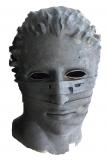Results 1 to 10 of 11
-
04-13-2016, 10:19 AM #1Student

- Join Date
- Oct 2014
- Posts
- 47
Can these parts be made by a 3d printer?
Hi,
If I have not posted in the correct place, excuse me.
Before I invest in a 3d printer and scanner I thought Ishould ask here first.
My sole purpose will be to replicate parts for vintagestereo cassette systems I repair and restore.
Please look at the photos
Will a 3d printer make acceptable replicas?
Will it print the plastic see through inserts in thecassette lids too?
The brushed aluminum inset is aluminum, that I guess cannotbe replicated.
Thank you so much
-
04-13-2016, 03:57 PM #2Staff Engineer

- Join Date
- Jan 2014
- Location
- Oakland, CA
- Posts
- 935
There are 3D printers that can output aluminum, but they're out of range for most of us. However, Shapeways offers aluminum printing from your files, which may or may not be worth doing, depending on how important that part is to you. If you need see-through inserts printed, they can do them in a clear resin using a SLA printer; FDM (the printing system used by the common cheap printers that deposit melted plastic) isn't going to work too well for that. But it will be able to produce the parts shown in black plastic.
If making parts like these was my main use for a scanner, I'd save the money and invest it in a good CAD program. You can replicate those parts by measuring and modeling a lot more efficiently than by scanning and trying to clean up the scans to meet your tolerances. If your parts were a lot more complicated, though, scanning and reverse-engineering would be worth considering.
Andrew Werby
www.computersculpture.com
-
04-13-2016, 04:07 PM #3Student

- Join Date
- Oct 2014
- Posts
- 47
Thank you Andrew for the thorough response.
-
04-14-2016, 01:39 AM #4
I agree with Andrew. Scanning won't help much. The aluminum parts can be replicated too though not at home.
-
04-15-2016, 11:39 AM #5Engineer-in-Training

- Join Date
- Aug 2015
- Posts
- 256
FDM printers won't be able to replicate parts so that they look like they weren't 3d printed, they may be able to make parts that are functional, but they won't look like the original.
More advanced SLA printing would be required to replicate parts with the smoothness and accuracy needed to look like OEM.
As for printing clear parts, even SLA printers won't give good clarity. For perfectly clear parts like that you'd want to print a part, create a mold and cast it in clear plastic -- using a vacuum chamber to degas it.
-
04-15-2016, 11:51 AM #6
what you can do is to use a filament with aluminium as the colourant.
My personal favourite is reprapper techs pla with aliminium. Has a great silver metallic finish that could be shined up with a quick coat of varnish.
So, yes, technically all those parts could be easily replicated on an fdm machine.
You might want to sand the print marks out, but that would onl;y be for stuff on the exterior. Interior parts could be used as they come off the printer.
Have a look at openscad.
That and a set of digital calipers and you can replicate just about anything :-)F
for the clear window - buy some thin perspex and cut it to size and glue.
-
04-15-2016, 02:00 PM #7Senior Engineer

- Join Date
- Jun 2014
- Location
- Burnley, UK
- Posts
- 1,662
A normal 2D scanner will do a good job on those parts.
-
04-15-2016, 02:35 PM #8
that's true, easy to extrude to 3d as well.
I've done that for a few things, worked quite well.
-
04-17-2016, 05:18 PM #9
-
04-18-2016, 02:37 AM #10
Ironically I agree with Andrew - scanning items like this will not give you a great output without doing some repair work manually on the meshes, you also will not get the sleek surfaces you require. SLA printing is the way to go for clear prints, there is PETG that can be printed on an FDM printer like we all have but the amount of work taken to make it 'glassy' is rediculous - but for you if it's a one off, then you might really be better sending the cad files to shapeways and having them do the printing for you. The aluminum parts would be cheaper for me to send the DXF files to the local metal shop and have them fabricate it for me.
Hex3D - 3D Printing and Design http://www.hex3d.com




 Reply With Quote
Reply With Quote







Extruder not feeding during print,...
Yesterday, 01:59 AM in Tips, Tricks and Tech Help